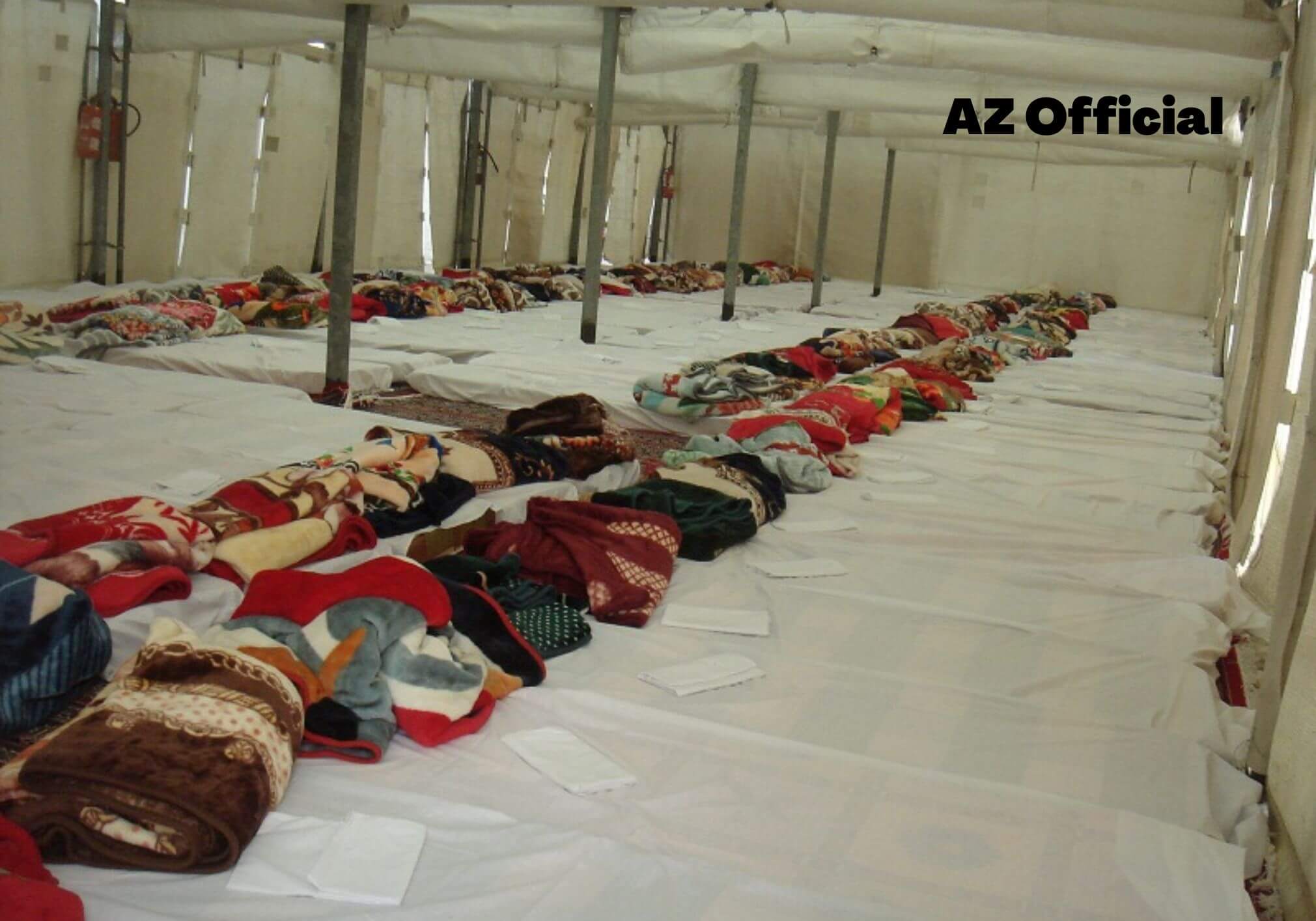Mina – Hajj Place
Six kilometers east of the Masjid al-Haram in Makkah is a valley called Mina.
It is where Hajj pilgrims stay the night on the 8th, 11th, and 12th of Dhul Hijjah,
and some even on the 13th. The Jamarat are the three stone pillars that
pilgrims throw rocks at as part of the Hajj rituals. They are in the valley of Mina.
Mina is mentioned in the Quran:
In Surah Baqarah of the Quran, the city of Mina is mentioned:
“And remember Allah on certain days with numbers.
if he leaves in less than two days, he hasn’t done anything wrong, and
if he waits until the third day, he hasn’t done anything wrong, as long as he fears Allah.
And be afraid of Allah and know that you will be brought back to Him.” [2:203]
The Meaning of ‘Mina’ :
The name Mina comes from the root word ma-na-ya, which means
“to put to the test,” “to go through,” or “to find.”
It has something to do with the words “manna” and “Tamanna,” which mean
“to stir up a desire” or “to hope for.”
It is also called Mina because it is linked to the test that Prophet Ebrahim had to go through when he was told to kill his son. When his determination was shown, he killed a ram instead of his son. The name implies the “location where he was tested” and “place where he excelled.”
The word “Mina” can also mean “to flow,” because the blood of animals that are sacrificed here flows during the Eidul Adha holiday. During the Hajjat-ul-Wada or Farewell Pilgrimage, the Muslims brought 100 camels to be killed.
The Prophet’s (ﷺ) Sacrifices
On the 10th of Dhul Hijjah, the Prophet (SAW) stoned the Jamarat and then went back to his camp in Mina, where he sacrificed 63 of the camels. Ali (r.a.) killed the last 37 camels, and the Prophet (SAW) told him to cook a piece of each camel and serve it to him and his companions.
After the camels were killed, the Prophet (SAW) asked a barber to cut his hair.
Abu Bakr (RA) later talked about how different Khalid bin Waleed was before
he converted to Islam, when he was a fierce enemy of Muslims, from the Khalid who now said, “Oh Messenger of Allah, they’ve got their forelocks!” As long as no one else comes forward, my parents will foot the expense. When the Prophet gave it to him, he reverently placed it between his eyes and lips (SAW). According to legend, Khalid bin Waleed (RA) wore this hair as a hat.
The Mursalaat Cave (Mina in 1889) :
There is a cave in Mina called the “Cave of Mursalaat,”
which is where Surah Mursalaat was revealed to the Prophet (SAW).
Mina’s Capacity (Inside Mina)
Hajj pilgrims from around the world stay in Mina every year.
Mina is notable for its 100,000 air-conditioned tents spread across
a 20-square-mile region. Mina – Hajj Place

Reflection points at Mina :
A group of 12 men from Madinah took their first oath of allegiance to Allah in Mina.
Allah’s commandments included the prohibition of blasphemy and blasphemy and the prohibition of theft, adultery, the killing of children, and the prohibition of disobedience when instructed to do good. Mina – Hajj Place
During this time, Yathrib was transformed into Madinah, and this was the beginning of the city’s transformation. Couldn’t we take similar vows in this very place to help us develop a love for Allah and his messengers as the companions did?
This early in Hajj, the pilgrim’s heart begins to move toward a more spiritual and
a religious trip that will last a lifetime.
